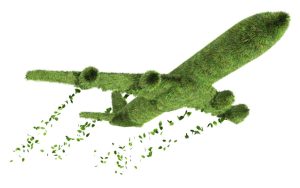The aerospace and aviation industries are experiencing massive growth following the decimation of the pandemic. There is no denying the fact that both sectors stand at the cusp of technological advancements and evolution. The field has enormously stepped up from the early days of aviation to a more sophisticated and technology-laden service industry.
The industry is undergoing a transformative change in its overall lifecycle process- from the design to the final flight and everything in between. Technology breakthroughs are yielding some exceptional results, redefining commercial aviation and space exploration. Taking a closer look into the future, the aerospace and aviation industry is poised to grow manifold in the next decade, with AI/ML and other related technologies at the forefront of innovation.
While many trends are being worked upon simultaneously, the one that is catching the most eyeballs is the eVTOL (Electric Vertical Take-off Landing) aircraft that uses electric power to hover, take off, and land vertically. This aircraft is from the not-so-distant future and would cater to point-to-point transportation between urban areas, finding its way as an efficient alternative to ground transport.
Achieving Sustainability with Each Flight
Sustainability has become a norm that needs to be addressed by every industry. The aviation sector is utilizing forefront technologies and finding the right resources to help reduce its carbon footprint. Airlines are exploring eco-friendly, alternative sustainable aviation fuels like biofuels that would help in reducing carbon emissions or improving aerodynamics to enhance fuel efficiency. Engineers are also developing electric and hybrid aircraft and airports placing energy-efficient practices to reduce the industry’s reliance on fossil fuels. With such initiatives peaking, the aviation sector is moving closer to achieving green goals by formulating sustainable infrastructure and energy management systems.
Technological Impetus on the Rise
Right from operations to safety, efficiency, and customer experience, the aviation industry relies extensively on technology. At the forefront is AI/ML and automation that has the potential to transform the way airlines and airports operate. The development involves streamlining processes like cargo transport, aircraft data examination, integration of HR, maintenance, and flight systems into the apt interface, integration of AI-powered software into standard flight simulation training devices that are capable of analyzing real-time data, provide instant feedback on the pilot’s performance, and provide insights to instructors. Also, the constant evolution of technologies like cloud, robotics, augmented reality, virtual reality, Big Data, the Internet of Things, and AI/ML, is bringing faster and more crisp results in data refining that would help build advanced biometric technology and other sophisticated systems.
Moreover, this is the age of unmanned aerial vehicles (UAVs) i.e. Drones and the aviation sector is benefitting tons from their ability to access difficult-to-reach areas and capture high-quality images. These features have helped the airlines to restructure and revolutionize their maintenance and inspection approach.
Cyber Threats Creeping into Intricate Digitised Aviation Systems
Any industry that works on critical digital infrastructure is prone to cyber-attacks. Aviation’s digital landscape is a complex one with multiple stakeholders including airlines, airports, OEMs, and several service providers. With growing complexity, the digital ecosystem built on diverse technologies, new and old, with different levels of cybersecurity measures becomes exceedingly vulnerable and high-value targets to cyber exploitation.
Multiple points in the industry’s vast and interconnected supply chain are usual targets of cybercriminals. The attacks can disrupt operations, steal valuable data (passenger’s personal info, credit card details, flight data, etc.) called phishing, or pose indirect threats (ransomware) on third-party vendors.
Thus, understanding the cybersecurity space becomes vital in the aviation business to brace against any possible breach.
Apurva Gopinath, Assistant Vice President, Financial Services and Profession Group, Commercial Risk Solutions, India at Aon India Insurance Brokers Private Limited spoke about the underlying cyber threat in the aviation sector and shared insights on how businesses can adopt better and stricter cybersecurity strategies.
“Aviation Businesses are facing the most challenging cyber threat landscape yet with global ransomware damage costs predicted to reach $20 billion this year, an increase of 57X from 5 years ago. Aon’s global Digital Forensics and Incident Response (DFIR) team report that over 50 per cent of those subject to ransomware attacks pay the ransom in some form. To strengthen cyber resilience, aviation companies must adopt a risk-based approach to review the effectiveness of controls, particularly in Access Management, Business Continuity, Third Party Risk and Vulnerability Management. Some of the actions companies can take to reinforce their cybersecurity strategies include conducting vulnerability assessments and breach simulations, proactively utilizing threat intelligence to monitor the techniques and procedures of threat actors, and reviewing governance including Business Continuity, Disaster Recovery (BCDR) plans. Aviation businesses should also quantify the financial loss of cyber events listed on their cyber risk register to ensure the appropriate return of security investment (ROSI) and check contractual obligations to ensure insurance policies adequately cover any financial loss arising out of a breach.”




